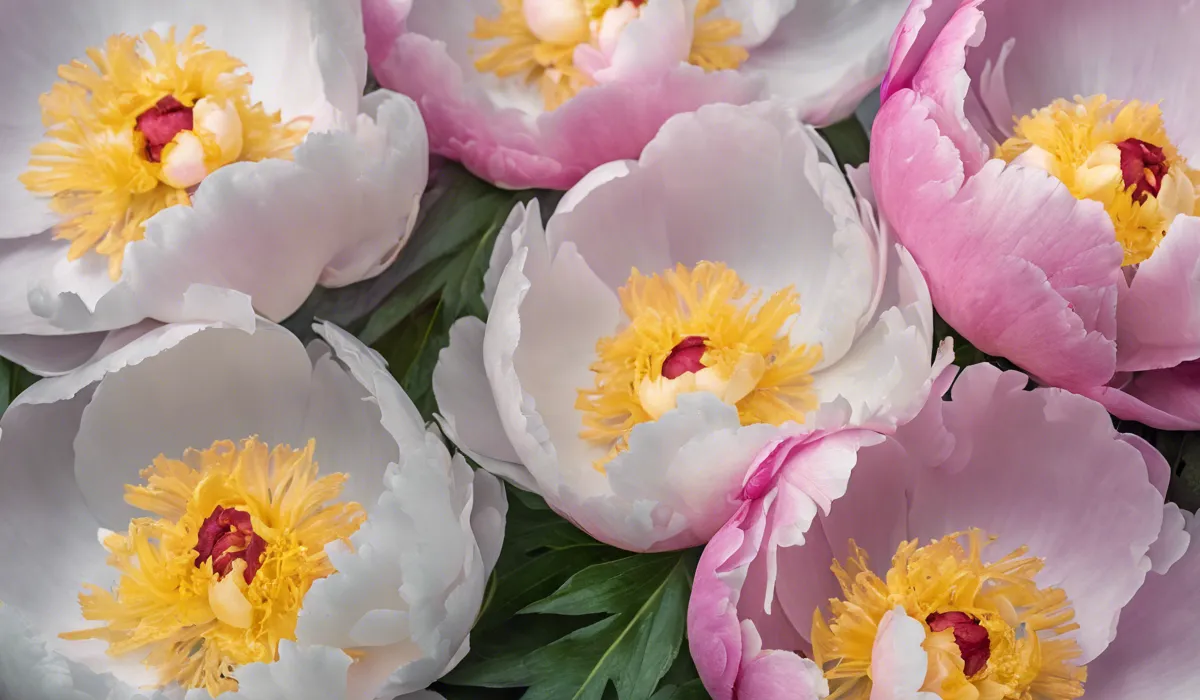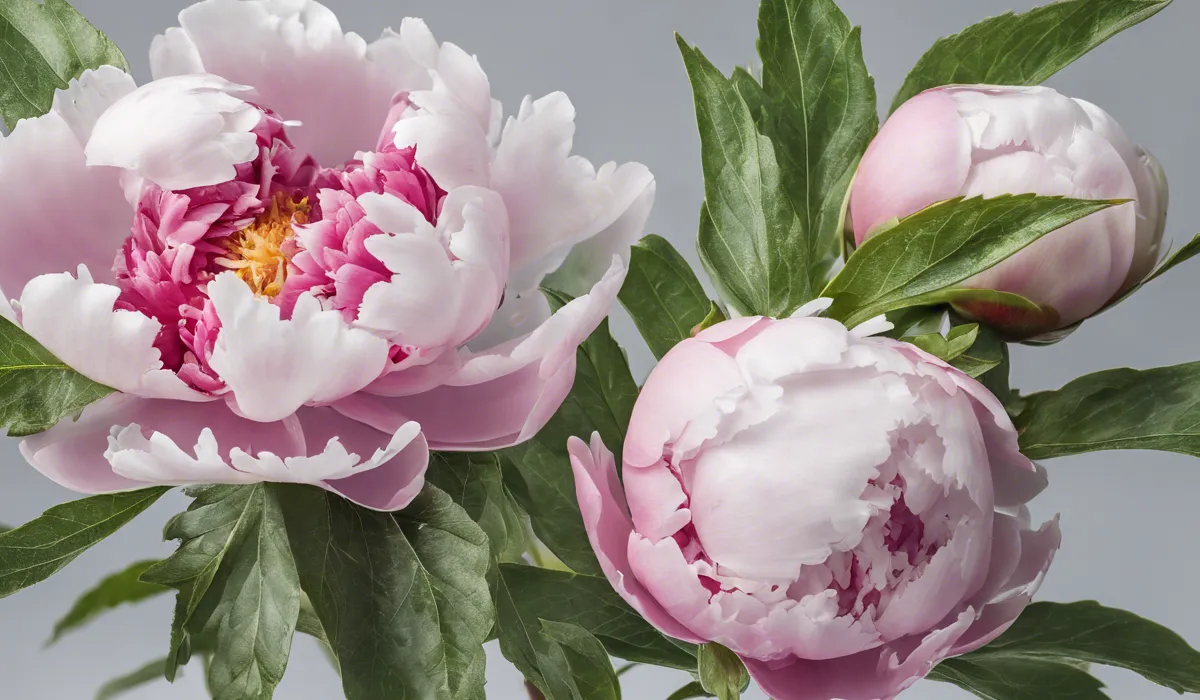To treat powdery mildew on peonies, remove affected foliage, improve air circulation around plants, and apply a fungicide such as neem oil or potassium bicarbonate.
Ensure consistent watering without wetting the leaves. Repeat treatment as necessary.
Identification and Understanding Powdery Mildew on Peonies

What is Powdery Mildew?
Powdery mildew is a fungal disease that affects a wide range of plants, including the beloved peonies. It is characterized by white or gray powdery spots on the foliage and stems of plants.
This fungus thrives in warm, dry climates and can spread quickly if left unchecked. Understanding this disease is the first step in protecting your peonies from its damaging effects.
Symptoms to Look For
The telltale sign of powdery mildew on peonies is the appearance of white, powdery spots on leaves and stems.
As the disease progresses, these spots can grow and merge, covering large areas of the plant.
Leaves may turn yellow or brown and fall off prematurely. Flower buds may also be affected, leading to poor blooming.
Catching these symptoms early can help you take action before the mildew causes significant damage.
Conditions Favoring Mildew Growth
Several factors contribute to the development of powdery mildew on peonies. High humidity combined with warm days and cool nights creates the perfect environment for the fungus to grow.
Poor air circulation around plants can exacerbate the problem, as can overcrowding. Understanding these conditions can help gardeners prevent the disease from taking hold in the first place.
Preventive Measures

Choosing Resistant Peony Varieties
One of the best ways to prevent powdery mildew is to start with peony varieties that are resistant to the disease.
Many hybrid peonies have been bred to be less susceptible to fungal issues. When shopping for peonies, look for those varieties and ask nursery staff for recommendations on the best resistant plants for your area.
Proper Planting for Air Flow
Good air circulation is critical in preventing powdery mildew. When planting peonies, ensure adequate space between plants to allow air to move freely.
This helps to reduce humidity around the foliage and discourage fungal growth. It also allows sunlight to penetrate the plant, which can inhibit the mildew.
Watering Techniques
Water peonies at the base to minimize moisture on the leaves which can promote mildew growth.
Watering in the morning allows any moisture on the leaves to dry quickly in the sun. Avoid overhead watering, especially in the evening, as this can leave water on the leaves overnight and create ideal conditions for mildew to thrive.
Maintenance and Cleanup
Regular maintenance is essential in keeping powdery mildew at bay. This includes weeding around peonies to improve air flow and removing any fallen debris that can harbor fungus.
If you notice any leaves showing signs of mildew, remove them immediately to prevent the spread of the disease. Dispose of these leaves properly and not in your compost pile.
Treatment Options for Powdery Mildew

Natural Remedies for Mildew Control
Baking Soda Mixtures
Baking soda has a natural fungicidal effect which can be useful in treating powdery mildew.
A mixture of baking soda and water, with a small amount of dish soap added to help it adhere to the leaves, can be sprayed on affected plants. This should be used with caution, as too strong a solution can harm the plants.
Milk Sprays
Milk sprays are another home remedy for powdery mildew. The exact reason why milk is effective is not fully understood, but it is believed that the proteins in milk react with the sun to create an antiseptic effect.
A diluted solution of milk and water can be sprayed on peony leaves to help manage mildew.
Neem Oil Treatments
Neem oil is a natural, plant-based oil that has fungicidal properties. It can be effective against powdery mildew when applied correctly.
Follow the manufacturer’s instructions for dilution and application, ensuring thorough coverage of the peony leaves for the best effect.
Care After Treatment
Monitoring for Recurrence
After treating powdery mildew, it is important to keep a close watch on your peonies for any signs of the disease returning.
Early detection means you can act quickly to manage any new outbreaks. Regular inspections of the plants, especially during warm and humid periods, are essential.
Adjusting Garden Practices
Continued care includes adjusting your gardening practices to prevent future issues with powdery mildew.
This may involve reevaluating plant spacing, watering methods, and fertilization to ensure you are providing an environment that is less conducive to fungal diseases.
Healthy, well-maintained plants are less likely to succumb to powdery mildew and other problems.
FAQs About Treating Powdery Mildew on Peonies
How do I remove powdery mildew from peony foliage?
Carefully remove and dispose of affected foliage from your peonies to reduce the spread of powdery mildew. Ensure to clean your tools afterwards to prevent contamination.
What can I do to prevent powdery mildew from infecting my peonies?
Improve air circulation around your peonies by spacing them properly and pruning any dense foliage. Water the plants at the base to avoid wetting the leaves, which can contribute to mildew growth.
Which fungicides are effective against powdery mildew on peonies?
Neem oil and potassium bicarbonate are effective fungicides for treating powdery mildew on peonies. Apply according to the product’s instructions.
How often should I treat my peonies for powdery mildew?
Repeat the fungicide treatment as necessary, following the label’s frequency recommendations, until the powdery mildew is under control.
Is it okay to water peonies from above when treating for powdery mildew?
No, it’s best to water at the base of the plant to avoid wetting the leaves, as moisture on the foliage can encourage the growth and spread of powdery mildew.
Final Thoughts
To combat powdery mildew on peonies, it’s essential to remove any affected leaves, ensure good air flow around the plants, and apply an appropriate fungicide like neem oil or potassium bicarbonate.
Water the plants at the base to prevent wetting the foliage, and be prepared to repeat the treatment if necessary to keep the mildew at bay.
